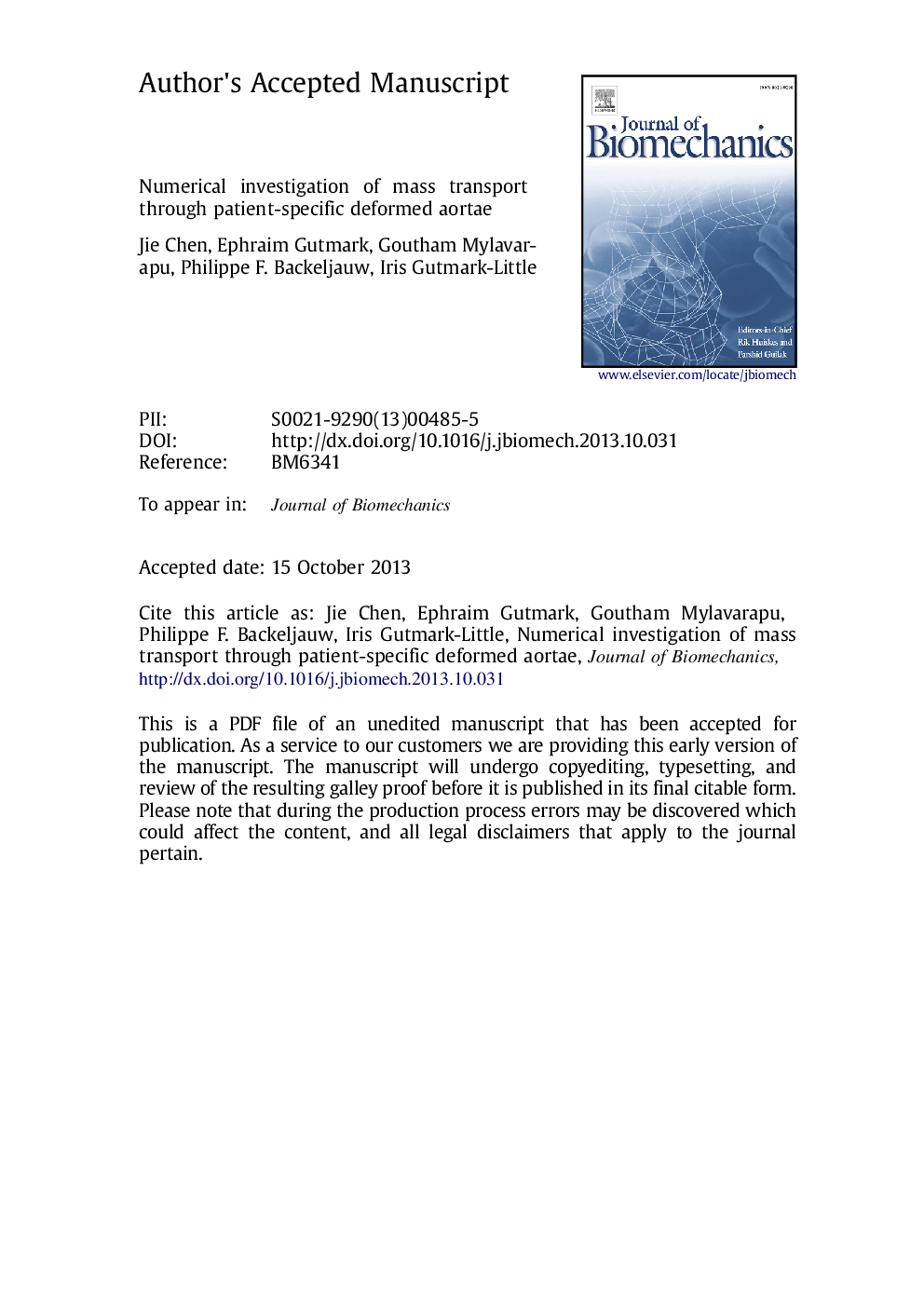| Article ID | Journal | Published Year | Pages | File Type |
|---|---|---|---|---|
| 10431568 | Journal of Biomechanics | 2014 | 38 Pages |
Abstract
Blood flow in human arteries has been investigated using computational fluid dynamics tools. This paper considers flow modeling through three aorta models reconstructed from cross-sectional magnetic resonance scans of female patients. One has the normal control configuration, the second has elongation of the transverse aorta, and the third has tortuosity of the aorta with stenosis. The objective of this study is to determine the impact of aortic abnormal geometries on the wall shear stress (WSS), luminal surface low-density lipoproteins (LDLs) concentration, and oxygen flux along the arterial wall. The results show that the curvature of the aortic arch and the stenosis have significant effects on the blood flow, and in turn, the mass transport. The location of hypoxia areas can be predicted well by ignoring the effect of hemoglobin on the oxygen transport. However, this simplification indeed alters the absolute value of Sherwood number on the wall.
Related Topics
Physical Sciences and Engineering
Engineering
Biomedical Engineering
Authors
Jie Chen, Ephraim Gutmark, Goutham Mylavarapu, Philippe F. Backeljauw, Iris Gutmark-Little,
